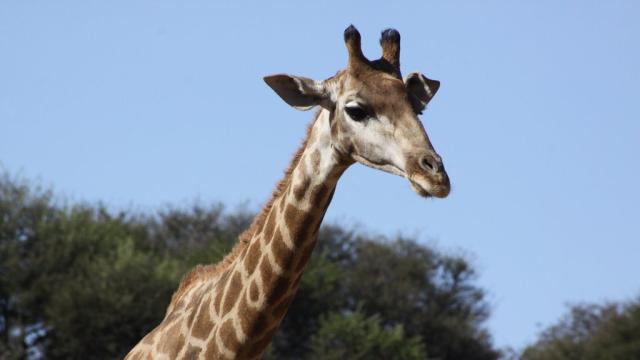You probably think you know how giraffe necks evolved. Maybe the ancestors of giraffes ate leaves from trees, and the ones who could reach the most leaves were the fittest, and therefore passed that trait down to the silly-looking long-necked animals we see today. But scientists don’t know that — in fact, there are at least six hypotheses as to how and why giraffes got their long necks.
Image: Derek Keats
A team of scientists came up with yet another explanation, one that falls in line with the giraffe’s ability to survive in arid environments: Maybe the giraffe has a long neck to regulate heat. But the story is a complex one that required performing some giraffe maths (oh, I like how that rolls off the tongue).
“So far there has only been one attempt to quantify giraffe surface area and this was in the context of determining buoyancy and potential swimming ability not thermoregulation,” the authors write in the paper published recently in the Journal of Arid Environments. Perhaps the increased surface area relative to mass resulting from a long neck has something to do with temperature regulation in giraffes. Perhaps.
Mass calculations are easy — just weigh the beast. But how do you calculate the surface area of a giraffe? “We subdivided the surface of giraffes into four components – the head, neck, trunk and upper legs, and lower legs,” the authors write, based on data from 30 male and 30 female specimens. The team really used some simple high school level maths and estimations to arrive at their answer: On average, a giraffe’s surface area is 7.3m2, similar to my child-sized university dorm room (surface area ranged from 2.2 to 11.7m2, depending on the giraffe).
It turns out, the giraffe doesn’t have a surface area-to-mass ratio that would cue into thermoregulatory benefits. But the authors still think that maybe the animal’s long neck and legs help it with heat loss. Other giraffe behaviours, such as positioning themselves so their bodies receive the least possible sunlight during the day, could aid in heat loss, too.
The point is, scientists still don’t really know why giraffes have long necks, and it’s unlikely there’s just one simple explanation. Instead, long necks probably evolved under a combination of pressures, perhaps including access to food and thermal regulation, because evolution is super complex. In this case, trying to figure things out has literally driven scientists to measure the surface area of giraffes.
